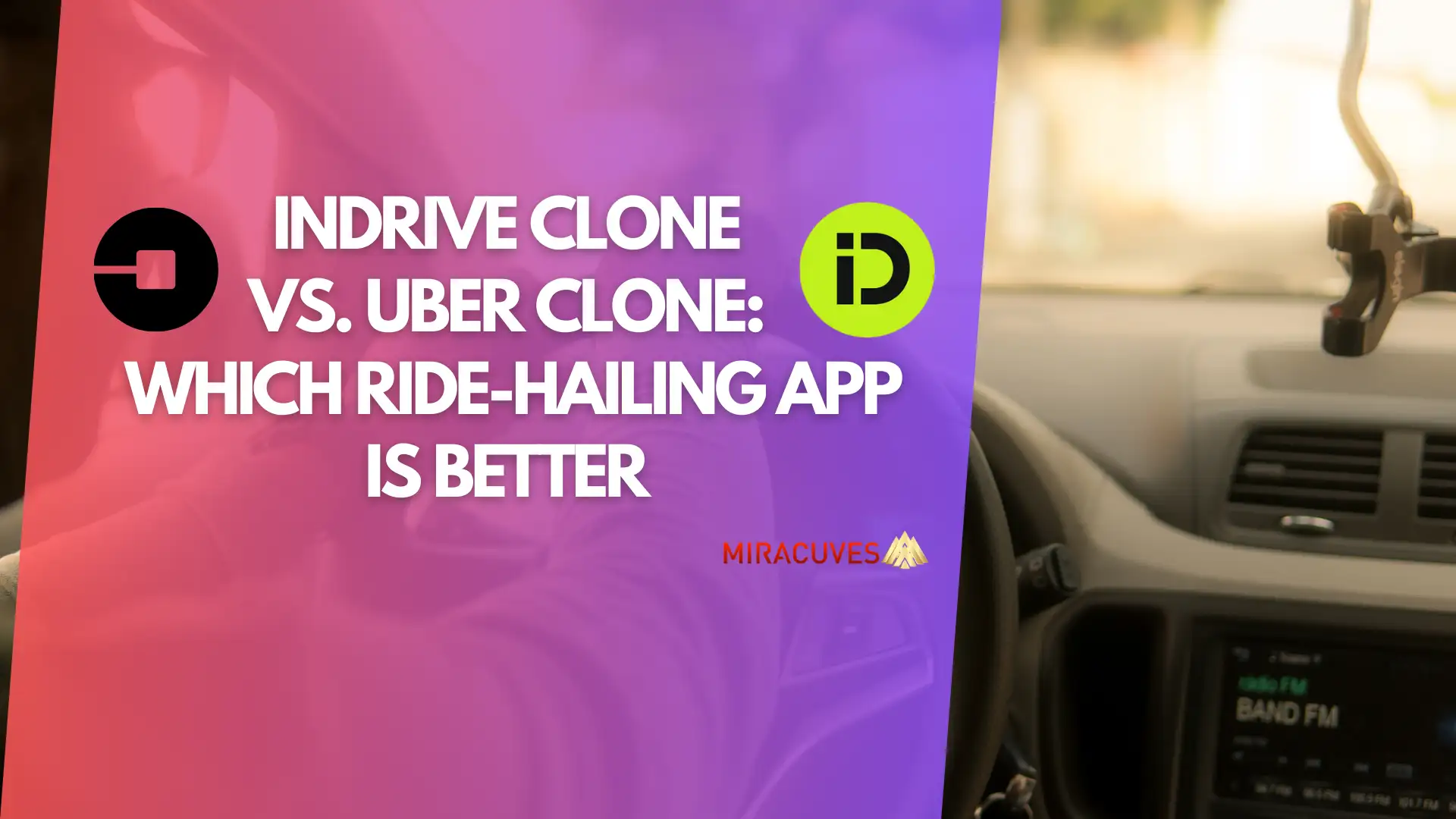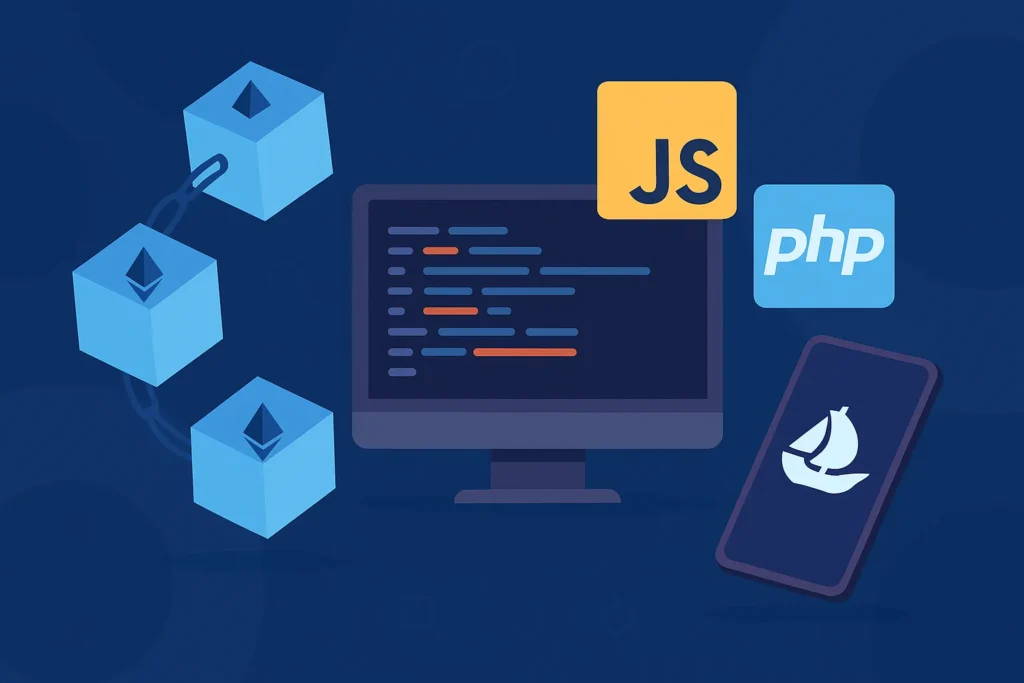The ride-hailing industry has rapidly transformed urban mobility, and as more businesses seek to enter this lucrative market, the challenge often lies in choosing the right platform. Two of the most popular solutions are the Indrive clone and the Uber clone. But how do you decide which is the best fit for your business? Each platform comes with its own unique features, business models, and scalability options. In this blog, we will provide an in-depth comparison of these two platforms to help you make an informed decision that aligns with your business goals.
The ride-hailing market is highly competitive, and the choice of platform can significantly impact the success of your business. Whether you aim for a niche market or mass adoption, understanding the strengths and weaknesses of the Indrive clone vs Uber clone is essential. This comparison will cover everything from business models and features to scalability and monetization strategies, giving you a complete picture to determine which option is right for your business.
Business Model Comparison
When evaluating the Indrive clone and Uber clone, their business models stand out as one of the key differentiators.
- Uber Clone Business Model: Uber’s model is based on automated fare calculation, where algorithms determine the price of a ride using factors such as distance, demand, and traffic. It provides instant pricing to both the driver and the passenger, with Uber earning through commission-based fees on each transaction. The transparency and simplicity of this model make it attractive for users and operators alike. Uber’s model has become a standard in the ride-hailing industry due to its predictable and scalable nature.
- Indrive Clone Business Model: In contrast, the Indrive clone follows a negotiation-based model, where passengers suggest a fare and drivers either accept or counter-offer. This unique approach gives users more control over the price and fosters a more competitive environment among drivers. Indrive earns a commission on successful rides, but the pricing flexibility appeals to users in regions where price sensitivity is high.
Benefits and Drawbacks:
- Uber Clone: Offers standardized pricing and a hassle-free user experience, making it easier to scale across different markets. However, it may face challenges in price-sensitive regions where passengers prefer lower costs.
- Indrive Clone: The negotiation model offers greater flexibility but might introduce complexities in user experience, especially for passengers who prefer convenience over negotiation.
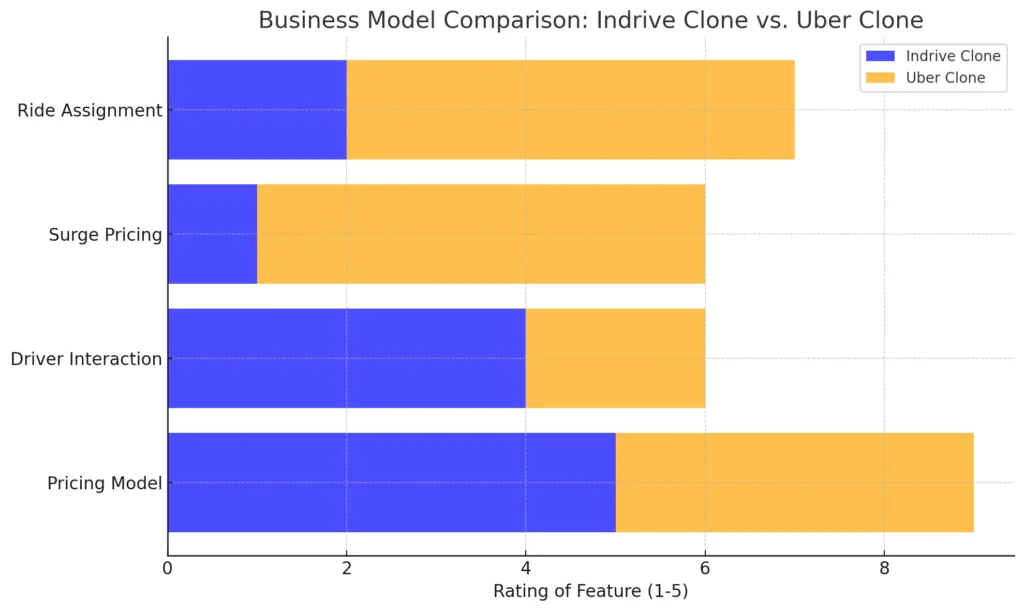
Feature Comparison
| Feature | Indrive Clone | Uber Clone |
|---|---|---|
| Pricing Model | Negotiation-based | Automated fare calculation |
| Real-Time Tracking | Basic tracking | Advanced real-time GPS |
| Payment Methods | Negotiable fare payment | Cashless, integrated gateways |
| Passenger-Driver Interaction | Direct communication | Limited chat functionality |
Both the Indrive clone and Uber clone come equipped with essential features for running a ride-hailing business, but the specifics vary depending on the model. Here’s a breakdown of key features for both platforms:
- Indrive Clone Features:
- Negotiation Option: Passengers and drivers can negotiate fares before accepting a ride.
- Passenger-Driver Chat: Enables direct communication between passengers and drivers.
- Transparent Fare: Passengers are aware of driver preferences and vice versa before finalizing the ride.
- Uber Clone Features:
- Automated Fare Calculation: Instant pricing based on distance, time, and demand factors.
- Real-time GPS Tracking: Passengers can track the location of their ride from pickup to drop-off.
- Surge Pricing: Dynamic pricing based on demand, offering higher fares during peak times.
- Integrated Payment Gateways: Secure payment systems for cashless transactions, making the process seamless for users.
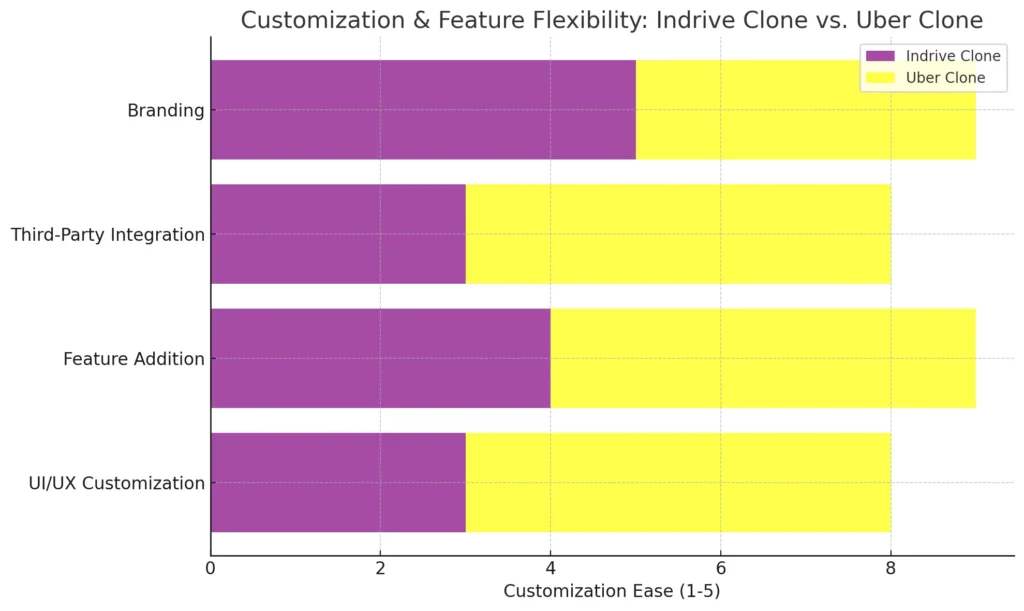
Scalability in Ride-Hailing Apps
Scalability is a critical factor for businesses aiming for long-term growth in the ride-hailing market. Both the Indrive clone and Uber clone platforms offer scalability, but in slightly different ways:
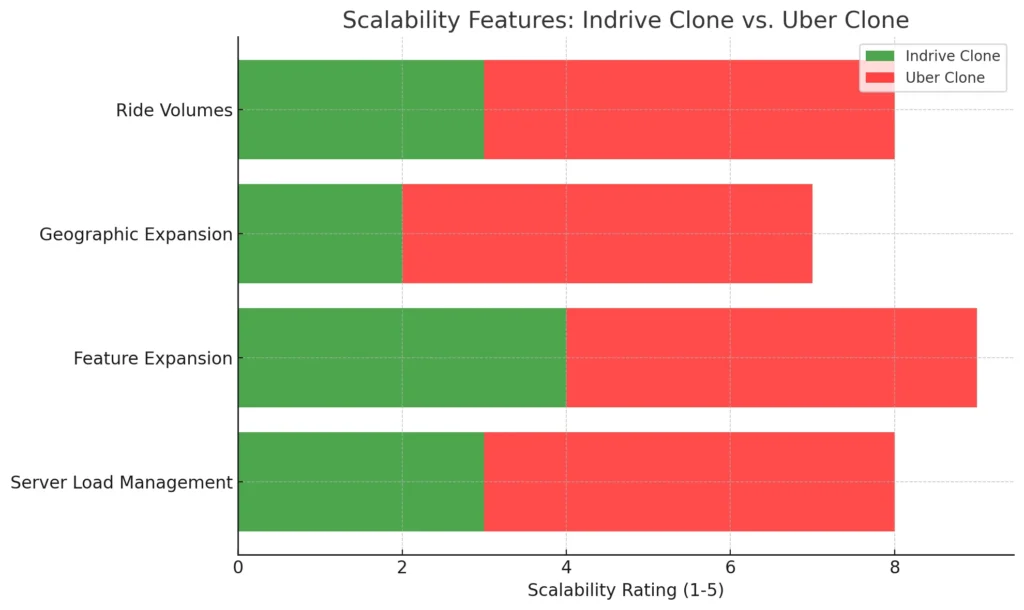
- Uber Clone Scalability: Uber’s platform is designed to handle massive growth across multiple regions and countries. Its architecture supports high demand with features like dynamic pricing, real-time updates, and automatic driver assignments. Uber clones are built on robust infrastructures that can handle increasing numbers of users, rides, and geographies with ease. As a result, they are highly scalable for large-scale operations.
- Indrive Clone Scalability: The Indrive clone is more niche, initially focusing on regions with price-sensitive markets. While it is scalable, its model may be better suited for businesses that plan to start in specific regions or target unique markets where fare negotiation is culturally preferred. However, it can also be scaled globally by adapting to regional requirements and rider preferences.
Scaling Features to Consider:
- Server Load Management: Uber clones typically have better infrastructure support for handling large numbers of concurrent users.
- Geographic Expansion: Both platforms offer multi-city and multi-country expansion options, but Uber clones tend to be more streamlined for global markets.
- Feature Expansion: Both Indrive and Uber clones allow for the integration of new features over time, such as ride-sharing or food delivery services, to accommodate business growth.
Industry Examples:
- Uber Clone: Uber’s global presence showcases its scalability capabilities, with operations spanning hundreds of cities worldwide. Businesses using Uber clones benefit from similar scalability for rapid expansion.
- Indrive Clone: Indrive’s success in emerging markets highlights the scalability potential of the negotiation-based model, especially in regions where users prefer fare flexibility.
This table highlights the scalability features of both platforms, focusing on server load management, geographic expansion, and feature integration.
| Scalability Aspect | Indrive Clone | Uber Clone |
|---|---|---|
| Server Load Management | Requires more customization | Built-in, optimized for high load |
| Geographic Expansion | Region-specific scaling | Global scaling ready |
| Feature Expansion | Custom feature development | Pre-built options for easy expansion |
| Ride Volumes | Suitable for lower to mid-scale | Optimized for high-volume traffic |
Ready to launch your Uber/Indrive clone app?
Request a demo today to see how we can help you develop a platform with advanced features like user-driven ride pricing, driver profiles, and payment integration.
Development & Customization
When choosing between an Indrive clone and an Uber clone, the flexibility for customization plays a pivotal role in adapting the app to your business needs.
- Uber Clone Customization: The Uber clone is built for scalability and comes with various in-built features, making it relatively easy to rebrand and customize. Businesses can quickly add new features like carpooling, integrate payment gateways, or create a branded user interface (UI) without disrupting the core functionality. Uber clones also typically have stronger developer support and documentation, making customization smoother.
- Indrive Clone Customization: While the Indrive clone is also customizable, its negotiation-based model requires more fine-tuning, especially if the goal is to streamline the user experience. This clone allows for unique features such as fare negotiation preferences, regional pricing customizations, and personalized driver interaction interfaces. However, these modifications may require more time and resources, especially when scaling to different regions with unique market behaviors.
Customization Aspects to Consider:
- UI/UX Flexibility: Both clones offer customization for branding, but Uber clones typically provide more polished templates for a seamless user experience.
- Feature Integration: Uber clones can incorporate new services like food delivery or logistics more easily, while Indrive clones offer niche customizations such as fare flexibility options.
- Cost Consideration: Customizing features and branding on either platform can affect development costs, with Uber clones generally offering quicker, cost-effective solutions.
Integration with Third-Party Services
When building a ride-hailing app, third-party integrations play a vital role in enhancing functionality. Both the Indrive clone and Uber clone offer opportunities for seamless integration with external services, but the scope and ease of integration differ.
- Uber Clone Integration: Uber clones are designed for extensive API integration. They easily connect with third-party services like payment gateways (Stripe, PayPal), mapping services (Google Maps, Mapbox), and marketing automation tools. The architecture is usually well-documented, making it easier for developers to add functionalities such as multi-currency support, driver analytics, or chatbots.
- Indrive Clone Integration: The Indrive clone also supports third-party integrations, but it might require more customization due to the unique fare negotiation feature. It can integrate with similar services like payment gateways, map APIs, and even local services for ride optimization or customer support. However, businesses might need to customize these integrations based on regional preferences or specific operational requirements.
Popular Third-Party Integrations:
- Payment Systems: Both clones support a variety of secure payment gateways, allowing for multiple payment methods like credit cards, e-wallets, and even crypto, depending on your market.
- Map Services: Both platforms use GPS and map integration for route optimization, with popular services like Google Maps and Mapbox.
- Analytics Tools: Uber clones typically come with more pre-built analytics integrations, while Indrive clones may require custom development for tracking user and driver behaviors.
Security & Privacy Concerns
In today’s digital landscape, ensuring data security and privacy is paramount, especially in ride-hailing apps where sensitive passenger and driver information is constantly exchanged. Both the Indrive clone and Uber clone come with built-in security features, but there are some key differences to consider.
- Uber Clone Security: Uber clones often come equipped with advanced encryption protocols, secure data storage, and compliance with industry standards like GDPR. Data privacy is a top priority, with features like two-factor authentication and secure payment gateways to protect user information.
- Indrive Clone Security: Indrive clones also offer robust security measures, particularly around fare negotiation and driver-passenger interactions. However, since the negotiation model may involve more direct communication between drivers and passengers, businesses may need to implement additional privacy measures, such as encrypted messaging or limited visibility of personal data.
Key Security Features:
- Data Encryption: Both clones use encryption to protect user data during transit and storage.
- Compliance with Regulations: Uber clones are more likely to be pre-configured for GDPR compliance and other global data protection standards, while Indrive clones may require region-specific customization.
- Fraud Prevention: Uber clones often come with more built-in fraud detection systems for payments, whereas Indrive clones may need customization for real-time fraud prevention tools.
Marketing & Branding Potential
One of the key aspects of launching a successful ride-hailing app is ensuring it stands out in the market. Both Indrive clones and Uber clones offer branding flexibility, but the degree of customization can vary.
- Uber Clone Branding: Uber clones typically provide more ready-made templates that allow for easy rebranding. You can add your company’s logo, customize the color schemes, and integrate personalized marketing strategies. Uber clones also support user retention tools like loyalty programs, promotional codes, and referral systems, which can significantly boost customer engagement.
- Indrive Clone Branding: Indrive clones offer slightly more flexibility in terms of creating a unique user experience, thanks to its distinct fare negotiation model. This can be leveraged in marketing to differentiate the app from competitors. However, businesses may need to invest in more tailored marketing strategies to highlight the app’s unique features and appeal to niche markets.
Branding & Marketing Strategies:
- Customization for Branding: Both clones allow for easy brand integration, but Uber clones often come with pre-set features for quicker launch.
- Customer Loyalty Programs: Uber clones have built-in features to run marketing campaigns and offer discounts or loyalty rewards. Indrive clones may require more customization to support similar marketing efforts.
- Market Penetration: Due to Uber’s global recognition, Uber clones can leverage established trust and user familiarity. Indrive clones, however, may require more education and outreach efforts to explain the unique fare model.
For businesses looking to enter established markets quickly, Uber clones offer more out-of-the-box solutions for branding and marketing. For those targeting niche markets or looking to offer a unique user experience, Indrive clones provide flexibility in branding but may require additional marketing efforts to explain the app’s differentiation.
Conclusion
After reviewing the differences between an Indrive clone and an Uber clone, it’s clear that both platforms offer unique advantages depending on your business goals and target market. The Uber clone is ideal for businesses aiming for rapid global scalability and a seamless user experience, with a robust set of features ready for expansion. On the other hand, the Indrive clone is perfect for businesses that want flexibility in pricing and a model that resonates in price-sensitive markets, though it might require more customization.
Ultimately, the choice depends on your market, budget, and long-term strategy. Both clones provide powerful tools to kickstart your ride-hailing business, but aligning the platform with your vision and operational needs is the key to success.
Looking to build a powerful ride-hailing app like Indrive or Uber? Miracuves offers tailored solutions to help you get started quickly. Whether it’s scalability, customization, or advanced features, we have you covered. Visit Miracuves.com today to explore how we can turn your ride-hailing business idea into reality.
Kickstart a dynamic ride-hailing service..
Launch a powerful ride-hailing service with real-time GPS tracking, smart ride matching, and secure payment integration.
FAQs
Which ride-hailing app clone is better for startups?
For startups looking to enter established markets quickly, the Uber clone offers ready-to-use features and easier scalability. The Indrive clone is better suited for niche markets, particularly in regions with price-sensitive customers.
How do Indrive and Uber clones differ in terms of pricing models?
The Uber clone offers automated, dynamic pricing, while the Indrive clone uses a negotiation-based model, giving users control over fare prices.
Can I scale my business globally with both platforms?
Yes, both platforms can be scaled globally. The Uber clone is more streamlined for rapid global expansion, while the Indrive clone can be scaled but may require more customization, especially in regions with different fare negotiation practices.
How customizable are the Indrive and Uber clones?
Both clones are highly customizable in terms of branding, features, and user interface. The Uber clone typically allows faster customization with pre-built templates, while the Indrive clone might need more development to tailor features such as fare negotiations and customer interactions.
Which platform offers better security features?
Both clones come with essential security features such as data encryption and secure payment systems. The Uber clone usually has more built-in compliance with global data protection regulations, while the Indrive clone may need additional adjustments for specific security and privacy needs, particularly around passenger-driver communications.



